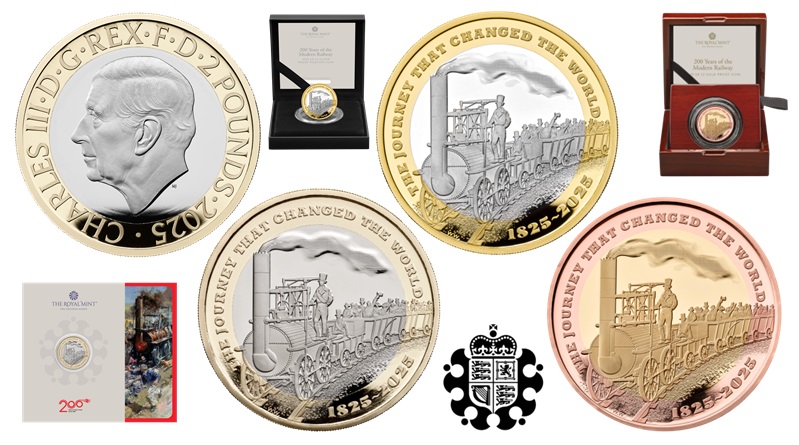The journey of practical and profitable passenger rail travel began in 1804 with a 500 gold Guinea (£21,000 today) bet. It was between two industrialists that prompted Cornish engineer Richard Trevithick (1771 – 1833) to create the Penydarren locomotive in South Wales. His intention was to prove that steam could be used to haul coal and, just four years later Trevithick ran a steam engine on a circular track but the ground-breaking proposition failed to attract money from investors.
It wasn’t until the 27th September 1825 that George Stephenson’s steam-powered Locomotion No. 1 transported hundreds of passengers in England for 26 miles between Shildon, Darlington and Stockton. It was this journey that would mark the start of a transport industry which would shape and transform the modern world in terms of travel. The seminal journey was made possible through innovative thinking that took place at the beginning of the 19th century and Trevithick’s ingenuity that paved the way for the world’s first public steam railway.
The beginning of the world’s public railway system two centuries ago and since then, rail travel has undergone vast technological and engineering advancements. Rail transport as we know it today has influenced and contributed to tourism, cuisine, trade, law and order, post and art. The industry continues to evolve into a faster, ecologically and energy efficient system as well as providing reliable and safe transportation into this century and beyond. The iconic locomotive that started a worldwide transport industry is on display at Locomotion in Shildon, situated on the original 1825 Stockton & Darlington Railway route.

Designed by William Webb, the reverse of the commemorative UK £2 coin struck to celebrate 200 years of the modern railway captures that seminal journey in 1825 by depicting the image of Locomotion No.1 along with the cars carrying the first railway passengers as well as a standing image of the train’s builder George Stephenson, operating the train as engineer. Along the upper rim is the commemorative text THE JOURNEY THAT CHANGED THE WORLD. Below the primary design are the celebratory years 1825 and 2025. The obverse side bears the effigy of HM King Charles III created by British sculptor Martin Jennings. The year of release 2025 and the denomination 2 POUNDS is part of the legend surrounding the King’s likeness. The coin also includes the incused lettering around the edge and reads ACTIVE · LOCOMOTION NO 1 in tribute to the revolutionary locomotive.
| Denomination | Metal | Weight | Diameter | Quality | Mintage limit |
| 2 Pounds | Bi-metallic | 12 g. | 28.4 mm. | BU | Unlimited |
| 2 Pounds | .925 Silver | 12 g. | 28.4 mm. | Proof | 4000 |
| 2 Pounds | .925 Silver | 24 g. | 28.4 mm. | Proof | 1350 |
| 2 Pounds | .9167 Gold | 15.98 g. | 28.4 mm. | Proof | 100 |
The BU bi-metallic base metal coins are housed in a blister-pak type folder with informative text and illustrations. The sterling silver proof and silver piedfort coins are presented in a custom black vinyl covered case and the gold proof coins are presented in a polished hardwood case – all are accompanied with a numbered certificate of authenticity. For additional information, please visit the Royal Mint’s e-webshop.
Source link







